2009 Mazda CX-7

With the CX-7, Mazda has taken the crossover to an entirely new sporty level. Thanks to a progressive design, sporty suspension and an engine borrowed from the MazdaSpeed3, this SUV is so compelling it might even have some entry-level luxury crossover buyers looking down-market to a non-luxury vehicle that has high aspirations.
FAST FACTS
| 1. The CX-7 is powered by a turbocharged direct-injection engine (the same one found in the MazdaSpeed3), which makes 244hp and 258 ft-lbs of torque. |
| 2. FWD models are rated at 17/23 mpg (city highway) and AWD models achieve 16/22 mpg. |
| 3. A less-powerful 2.5-liter 4-cylinder engine will be offered in 2010, which should make the base model CX-7 noticeably less expensive. |
The exterior of the CX-7 is certainly attractive, and Mazda’s “Zoom-Zoom” character definitely shines through. It’s one of, if not the, best looking entry-level crossover on the market. Some of this has to do with the 66-degree windshield angle that puts some sports cars to shame. The CX-7 even pulls off those white taillights that have been out of style on suped-up Honda Civics since 2001.
The Grand Touring model adds even more style to the package with body colored mirrors, chrome door handles, HID headlights and fog lights.
BIG POWER NUMBERS, BUT IT DOESN’T FEEL POWERFUL
As for that engine, it’s a turbocharged direct-injection 2.3-liter four-cylinder unit and makes a significant 244hp at 5000 rpm and 258 ft-lbs or torque at 2500 rpm. This all sounds impressive but it never feels all that fast and while 2500 rpm is relatively low for the torque to come on full, the CX-7 is still missing that torquey off-the-line pull that one expects from an SUV. The engine just feels like it wasn’t meant for this vehicle… and that’s because it wasn’t.
Year-one CX-7 models required premium fuel, but Mazda has since tweaked it so that premium is only recommended (but not required), which is a good thing because premium fuel in a non-premium vehicle can be a real deal breaker. It also feels like a rip-off when you consider that the larger, more powerful and more luxurious CX-9 takes regular fuel.
Even combined with a six-speed automatic transmission the CX-7 turbo-four still only gets fuel mileage that is just ok, with a rating of 17/23 mpg (city highway) for FWD models and just 16/22 mpg for all-wheel drive version.
HANDLING AT THE EXPENSE OF COMFORT
As for the rest of the Zoom-Zoom philosophy, it seems like Mazda might have taken things a bit to far. I really did love the small steering wheel, direct steering feel and agility of the overall package, but the suspension was harsh. During my brief time in the car I lived in fear of potholes. Honestly, the setup on this crossover is stiff in a way that is only forgivable in a high performance sports car.
At first I thought it might be partially due to some low profile rubber on the nice 18-inch wheels, but that can’t be the case as the tires are relatively tall 235/60/18s.
One other performance highlight of the CX-7 is its brakes. Which, by the way, is also a safety highlight. While crossovers are generally car-like in many ways, stopping distances aren’t usually one of them. The CX-7, however, bucks this trend by offering stopping distances of roughly 120 feet from 60 mph. That might not mean a lot to most prospective buyers but to put it in perspective, it’s more in line with sports car stopping distances than SUV distances.
Unfortunately my time in my CX-7 tester was cut short due to what appeared to be warped brakes. This of course brings to mind the less than stellar reputation Mazda has earned of late for its reliability, landing in the bottom five in the latest JP Power Vehicle Dependability Study.
WHAT’S WITH THE FAKE CROCODILE LEATHER?
Upon opening the door of my top-level Grand Touring tester I was immediately taken aback by the “sport stripe” that runs up the middle off the leather seats. The stripe appears to be faux-crocodile skin and is not only hideous, but its pretentiousness is completely out of place. I think Mazda needs to send whoever came up with this idea back to designing shoes in Milan.
Otherwise the interior was just so-so with dials, knobs and switches of average quality. The factory sound system (an AM/FM/CD/MP3 unit, which now features an auxiliary input for 2009) was upgraded with the $4,485 Technology Package, which includes a 9-speaker Bose sound system, a touch-screen DVD navigation system, back-up camera, Bluetooth compatibility, a six-month Sirius satellite radio subscription and a moonroof.
The Navigation system seemed a little basic in appearance but was actually far easier to operate than most on the market.
Other interior highlights include an auto-dimming rearview mirror with a Homelink system and Mazda’s Advanced Keyless Entry & Start System, which uses a credit card sized smart key. So long as you have the smart key on your person, just push the black rubber button on the door handle to lock or unlock the car. And once you’re inside, just turn the plastic knob where you’d expect the ignition slot to be and the engine comes to life. The feature was definitely convenient, although for aesthetic purposes it would be nice to have a push-button ignition.
All models come with a leather wrapped steering wheel with audio and cruise controls and Grand Touring models get piano-black accents. The wheel has a tilt function but no telescoping function. All models get a 6-way power driver’s seat with an optional upgrade to an 8-way power heated seat with lumbar support (which comes standard on Touring and Grand Touring models).
Power locks and windows (with one-touch for the front) are standard, as is air conditioning – with climate control standard on Grand Touring models.
GOOD CARGO ROOM AND FIRST-RATE SAFETY
As for the spaciousness of the interior, it is actually quite good. I say “actually” because with the sporty look you expect form to have superseded function, but that is not the case. Rear seat legroom is sufficient for adults and headroom is not an issue either – despite the sloping design outside.
Cargo space is also good with 29.9 cubic feet behind the rear seats and a total of 58.6 cu-ft of space with the seats folded flat.
Another area where the CX-7 excels is in the safety department. All models come with standard ABS, traction and stability control as well as six airbags (driver and passenger front and side airbags and side curtain airbags for front and rear). The CX-7 even has a sensor to detect a rollover and inflates the side and curtain airbags early to help cushion passengers.
On top of all this, the NHTSA has awarded the CX-7 with a five-star front and side-impact crash rating as well as a four-start rollover rating.
The CX-7 comes with a typically low 2,000-lb tow rating, which is pretty much par for the course in this category.
If this article hasn’t dissuaded you from taking a more in-depth look at the CX-7, you’ll probably want to know what the best looking crossover on the market will run you. Currently FWD models range in price from $23,900 to $26,700 with AWD models starting at $25,600 and topping out at $28,400. For our Canadian readers, they can enjoy the simplicity of just two trim levels (GS and GT) with top-level GT models only available in AWD. Canadian pricing lists from $30,295 to $36,095 CDN.
All in, our top level Grand Touring model with the add-ons comes in at a pretty reasonable $33,555 with the $670 delivery fee.
How does this rate against the CX-7’s competition? Who knows? The CX-7 has a dozen or more competitors, including the Toyota RAV4, Highlander and FJ Cruiser, Honda CV-R, Hyundai Santa Fe, Nissan Rogue and Murano, Chevrolet Equinox and Traverse, Subaru Forester and more.
THE VERDICT
It’s tough to have to walk away from a vehicle that looks this good, but that’s what we’d advise. It really is a head turner, but Mazda just seems to have taken the Zoom-Zoom philosophy too far with the CX-7. The suspension is a deal breaker and despite all that power it didn’t feel that fast.
We’d strongly suggest a V6 option but Mazda seems to have other plans. Starting next year the CX-7 will be offered with a 2.5-liter 4-cylinder engine without any turbo and with significantly less power. This should help to bring the initial cost of ownership way down and make the entire package a lot more attractive. Now if they could just soften up the suspension.
PLUS
- Excellent safety rating
- Good cargo room
- Probably the best-looking crossover on the market
MINUS
- No feeling of torque
- Rock-hard suspension
- GT model comes with hideous fake crocodile leather stripe

With AutoGuide from its launch, Colum previously acted as Editor-in-Chief of Modified Luxury & Exotics magazine where he became a certifiable car snob driving supercars like the Koenigsegg CCX and racing down the autobahn in anything over 500 hp. He has won numerous automotive journalism awards including the Best Video Journalism Award in 2014 and 2015 from the Automotive Journalists Association of Canada (AJAC). Colum founded Geared Content Studios, VerticalScope's in-house branded content division and works to find ways to integrate brands organically into content.
More by Colum Wood

















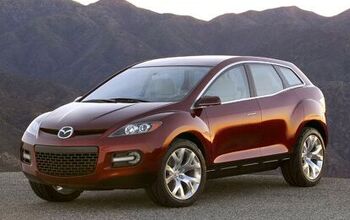

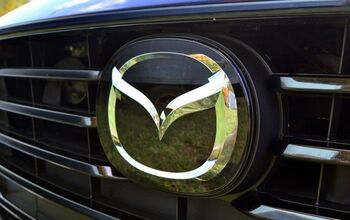
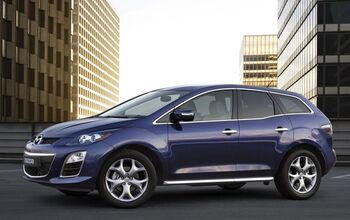

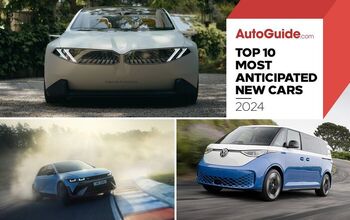
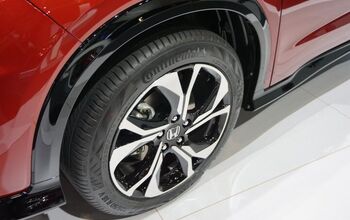

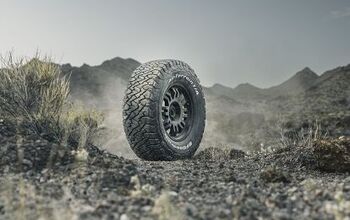

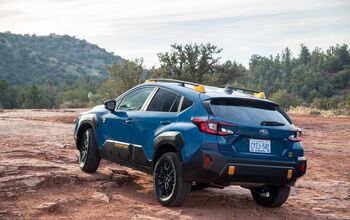
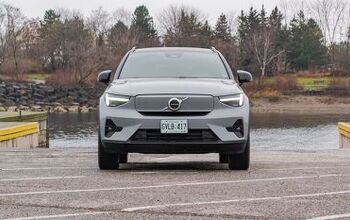

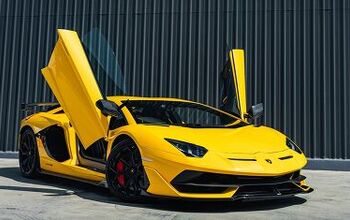
Comments
Join the conversation